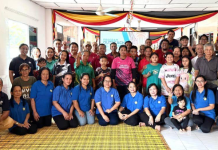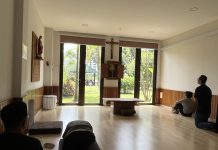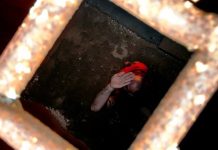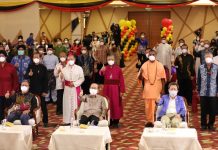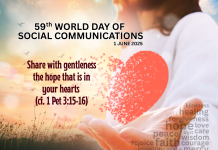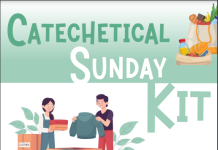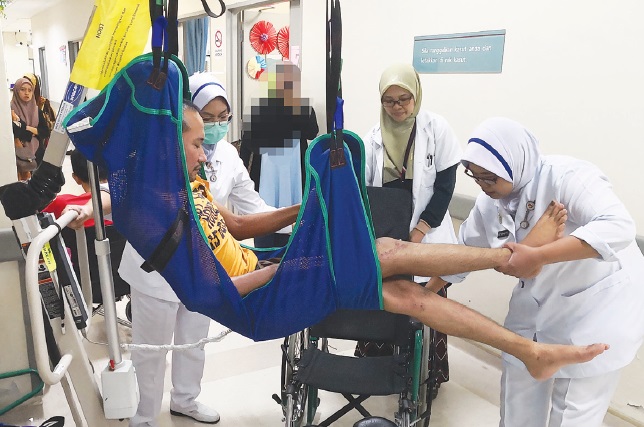JOHOR BAHRU — All of us have been cared for by our mothers and nurses at some point of our lives. Studies have shown that a foetus in the womb can feel the emotions of his or her mother.
Most of us after our birth would have been welcomed into this world by the touch of a doctor, midwife or a nurse who then cleaned us and handed us to our mothers.
These two vocations, motherhood and nursing, are indeed closely intertwined.
Mothers and nurses have touched our lives in many ways. All of us when we were children have been dependent on our mother or mother figure. For those who have suffered disabling illnesses, whether permanent or temporary, would have at some point been dependent on nurses.
Mothers nurture their children and see to almost all of their needs in the early phase of life while some of us are extremely privileged to be blessed with the love of a mother up till adulthood.
A mother’s love and sacrifice are immeasurable and we all have many stories to share about the wonderful deeds of our beloved mothers.
Less often though, do we hear about wonderful nurses who see to the patients’ needs from head to toe. Let me share with you about a special breed of nurses who look after people with disabilities just like how a mother looks after her child.
A severely brain injured patient developed a pressure ulcer at the back of her head from lying down too long. Hair has grown in between the scab and there is pus under the scab. Even putting saline on the wound is causing the patient to wince. The nurse patiently shaves the hair so that the wound can be dressed optimally and it becomes less painful to remove the scab from her head to allow better healing.
An undernourished stroke patient has not been swallowing well for many days. He has been coughing so badly at every meal time that he doesn’t feel like eating even though he is hungry. The nurse inserts a nasogastric tube for the patient then prepares milk for tube feeding. She does this every 4 to 6 hours. It is almost like feeding an infant throughout day and night.
Another patient is pushed into a clinic on a stretcher. He had a very long journey in an ambulance from the district. He is choking with secretions from the tracheostomy tube. The nurse quickly puts on a mask and an apron before proceeding to suction the trachy (breathing tube) so that the patient can breathe easier. She is exposed to the secretions coughed onto her sleeves but it does not deter her from doing her job well. She wants the patient to be able to expand his lungs and get better oxygen saturation.
A lady with a spinal cord injury wheels herself into the clinic room accompanied by her son. She confided with the nurse that she felt embarrassed having to depend on her son to catheterise her urine. The nurse gently guides her to clean her private part and teaches her to put the catheter into her urethra with the aid of a mirror. The nurse goes through the routine with the lady until she is confident enough. It is challenging for both the “student” and the “teacher” as both have to position themselves in a stressful posture with backs arched in a narrow couch behind a clinic curtain.
A young tetraplegic lady is paralysed from neck down. Her abdomen is bloated. Her aging mother has been seriously ill for ten days and could not perform the manual evacuation of stools for the lady. The nurse persuades the lady to allow her to help ease the constipation. The lady was hesitant because she was worried if the odour of a ten-day-old stool would be tolerable for the nurse. The whole process is lengthy but the nurse did her best to complete the job so that the lady will not suffer more complications before her own mother was well enough to resume that duty.
An elderly diabetic amputee comes with a foul smelling wound on his stump. There are wriggly maggots in the wound. The nurse did not only take out all the maggots and dress the wound. She also washed the other foot with antiseptic soap and trimmed the thickened toe nails knowing that “Uncle” is almost blind and cannot trim his own nails properly. She knows that she can help protect this good leg from another amputation.
This special breed of Nurses is ever ready to go the extra mile to help organise special wheelchair races or games for patients on their weekends. They will not hesitate to dig into their own pockets to help patients. Nurses have contributed a lot of energy in our annual celebration of International Day for Persons With Disabilities.
The Department of Rehabilitation Medicine is humbled by donors and sponsors from the various NGOs and private sector in support of our community activities for patients and their families.
What makes nurses tick? Compassion, love, good basic training, continuous learning, supportive mentors, conducive work environment with a cohesive team who laughs and cries together and often a mothering instinct. These are nurses who treat patients with empathy, regardless of race or religion.
During this month of Ramadhan, many nurses are fasting but they continue to work shifts to provide much needed care to patients. Similarly, a mother’s job is continuous in providing care to her family and often sacrificing her own comfort for the sake of others.
I am extolling the virtues of Nurses because I know these nurses expect nothing in return for their kindness. If you are a patient or carer who knows a kind nurse, please share the content of this article with them.
Healthcare providers choose to be in their profession because they care for others and hope that one day, if they are faced with a disabling illness, they will be rendered the same quality of care that they have helped to build.
I wish to share this story about the Florence Nightingales that I have worked with because this year Nurses Day falls on Mother’s Day, May 12.
One of the greatest lessons my dearest Mother taught me is to always appreciate the good deeds that others do. I have been blessed with wonderful nurses who have enabled the clinic and ward services to run smoothly.
In the words of Florence Nightingale, “Nursing is an art: and if it is to be made an art, it requires an exclusive devotion as hard a preparation as any painter’s or sculptor’s work; for what is the having to do with dead canvas or dead marble, compared with having to do with the living body, the temple of God’s spirit? It is one of the Fine Arts: I had almost said, the finest of Fine Arts.”
The dedication and teamwork from these super-heroines who sacrifice so much for the patients are just like how mothers sacrifice for their children. Happy Mother’s Day to all mothers and Happy Nurses Day to all nurses.
Dr Sharon Anne Khor HM





